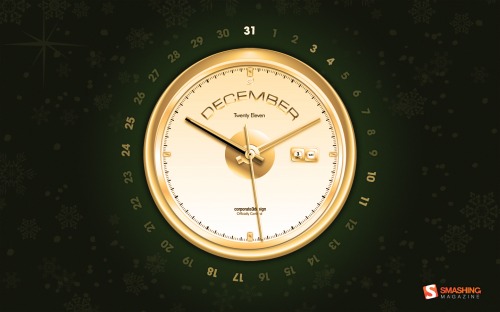Source(google.com.pk)
Free Desktop Backgrounds Biography
Acid3 test is a web test page from the Web Standards Project that checks a web browser's compliance with elements of various web standards, particularly the Document Object Model (DOM) and JavaScript.
If the test is successful, the results of the Acid3 test will display a gradually increasing fraction counter with colored rectangles in the background. The number of subtests passed will indicate the percentage that will be displayed on the screen. This percentage does not represent an actual percentage of conformance as the test does not really keep track of the subtests that were actually started (100 is assumed). Moreover, the browser also has to render the page exactly as the reference page is rendered in the same browser. Like the text of the Acid2 test, the text of the Acid3 reference rendering is not a bitmap, in order to allow for certain differences in font rendering.
Acid3 was in development from April 2007,[1] and released on 3 March 2008.[2] The main developer was Ian Hickson, a Google employee who also wrote the Acid2 test. Acid2 focused primarily on Cascading Style Sheets (CSS), but this third Acid test also focuses on technologies used on modern, highly interactive websites characteristic of Web 2.0, such as ECMAScript and DOM Level 2. A few subtests also concern Scalable Vector Graphics (SVG), Extensible Markup Language (XML), and data URIs. Controversially, it includes several elements from the CSS2 recommendation that were later removed in CSS2.1, but reintroduced in World Wide Web Consortium (W3C) CSS3 working drafts that have not made it to candidate recommendations yet.
Contents [hide]
1 The test
2 Detailed results
3 Development and impact
3.1 Presto and WebKit based browsers
3.2 Firefox - 1st time
3.3 Internet Explorer - 1st time
3.4 Firefox - 2nd time
3.5 Internet Explorer - 2nd time
3.6 Firefox and Internet Explorer - 3rd time
3.7 Internet Explorer - 4th time
3.8 Criticism
4 Standards tested
5 Passing conditions
6 Browsers that pass
6.1 Desktop browsers
6.2 Mobile browsers
7 Browsers that do not pass
7.1 Desktop browsers
7.2 Mobile browsers
7.3 Game console browsers
7.4 Other browsers
8 See also
9 References
10 External links
[edit]The test
The main part of Acid3 is written in ECMAScript (JavaScript) and consists of 100 subtests in six groups called “buckets”, including four special subtests (0, 97, 98, and 99).[3]
Bucket 1: DOM Traversal, DOM Range, HTTP
Bucket 2: DOM2 Core and DOM2 Events
Bucket 3: DOM2 Views, DOM2 Style, CSS 3 selectors and Media Queries[4]
Bucket 4: Behavior of HTML tables and forms when manipulated by script and DOM2 HTML
Bucket 5: Tests from the Acid3 Competition (SVG,[5] HTML, SMIL, Unicode, …)
Bucket 6: ECMAScript
The compliance criteria require that the test be run with a browser's default settings. The final rendering must have a 100/100 score and must be pixel-identical with the reference rendering.[6] On browsers designed for personal computers, the animation has to be smooth (taking no more than 33 ms for each subtest on reference hardware equivalent to a top-of-the-line Apple laptop) as well,[7] though slower performance on a slow device does not imply non-conformance.[8]
Acid3 rendered by Fennec 1.0 alpha 1. Buckets 2, 4, and 6 pass all 16 subtests, buckets 1 and 3 pass more than 10 subtests while bucket 5 passes more than 5 subtests.
To pass the test the browser must also display a generic favicon in the browser toolbar, not the favicon image from the Acid3 web server. The Acid3 server when asked for favicon.ico gives a 404 response code, but with image data in the body. This tests that the web browser correctly handles the 404 error code when fetching the favicon, by treating this as a failure and displaying the generic icon instead.[9]
When the test is running, the rectangles will be added to the rendered image; the number of subtests passed in the bucket will determine the color of the rectangles.
0 subtests passed: No rectangle shown.
1–5 subtests passed: Black rectangle.
6–10 subtests passed: Grey rectangle.
11–15 subtests passed: Silver rectangle.
All 16 subtests passed: Colored rectangle (left to right: red, orange, yellow, lime, blue, purple).
Note that Acid3 does not display exactly how many subtests passed in a bucket. For example, 3 subtests passing and 4 subtests passing in bucket 2 would both render a black rectangle.












Free Desktop Backgrounds Biography
Acid3 test is a web test page from the Web Standards Project that checks a web browser's compliance with elements of various web standards, particularly the Document Object Model (DOM) and JavaScript.
If the test is successful, the results of the Acid3 test will display a gradually increasing fraction counter with colored rectangles in the background. The number of subtests passed will indicate the percentage that will be displayed on the screen. This percentage does not represent an actual percentage of conformance as the test does not really keep track of the subtests that were actually started (100 is assumed). Moreover, the browser also has to render the page exactly as the reference page is rendered in the same browser. Like the text of the Acid2 test, the text of the Acid3 reference rendering is not a bitmap, in order to allow for certain differences in font rendering.
Acid3 was in development from April 2007,[1] and released on 3 March 2008.[2] The main developer was Ian Hickson, a Google employee who also wrote the Acid2 test. Acid2 focused primarily on Cascading Style Sheets (CSS), but this third Acid test also focuses on technologies used on modern, highly interactive websites characteristic of Web 2.0, such as ECMAScript and DOM Level 2. A few subtests also concern Scalable Vector Graphics (SVG), Extensible Markup Language (XML), and data URIs. Controversially, it includes several elements from the CSS2 recommendation that were later removed in CSS2.1, but reintroduced in World Wide Web Consortium (W3C) CSS3 working drafts that have not made it to candidate recommendations yet.
Contents [hide]
1 The test
2 Detailed results
3 Development and impact
3.1 Presto and WebKit based browsers
3.2 Firefox - 1st time
3.3 Internet Explorer - 1st time
3.4 Firefox - 2nd time
3.5 Internet Explorer - 2nd time
3.6 Firefox and Internet Explorer - 3rd time
3.7 Internet Explorer - 4th time
3.8 Criticism
4 Standards tested
5 Passing conditions
6 Browsers that pass
6.1 Desktop browsers
6.2 Mobile browsers
7 Browsers that do not pass
7.1 Desktop browsers
7.2 Mobile browsers
7.3 Game console browsers
7.4 Other browsers
8 See also
9 References
10 External links
[edit]The test
The main part of Acid3 is written in ECMAScript (JavaScript) and consists of 100 subtests in six groups called “buckets”, including four special subtests (0, 97, 98, and 99).[3]
Bucket 1: DOM Traversal, DOM Range, HTTP
Bucket 2: DOM2 Core and DOM2 Events
Bucket 3: DOM2 Views, DOM2 Style, CSS 3 selectors and Media Queries[4]
Bucket 4: Behavior of HTML tables and forms when manipulated by script and DOM2 HTML
Bucket 5: Tests from the Acid3 Competition (SVG,[5] HTML, SMIL, Unicode, …)
Bucket 6: ECMAScript
The compliance criteria require that the test be run with a browser's default settings. The final rendering must have a 100/100 score and must be pixel-identical with the reference rendering.[6] On browsers designed for personal computers, the animation has to be smooth (taking no more than 33 ms for each subtest on reference hardware equivalent to a top-of-the-line Apple laptop) as well,[7] though slower performance on a slow device does not imply non-conformance.[8]
Acid3 rendered by Fennec 1.0 alpha 1. Buckets 2, 4, and 6 pass all 16 subtests, buckets 1 and 3 pass more than 10 subtests while bucket 5 passes more than 5 subtests.
To pass the test the browser must also display a generic favicon in the browser toolbar, not the favicon image from the Acid3 web server. The Acid3 server when asked for favicon.ico gives a 404 response code, but with image data in the body. This tests that the web browser correctly handles the 404 error code when fetching the favicon, by treating this as a failure and displaying the generic icon instead.[9]
When the test is running, the rectangles will be added to the rendered image; the number of subtests passed in the bucket will determine the color of the rectangles.
0 subtests passed: No rectangle shown.
1–5 subtests passed: Black rectangle.
6–10 subtests passed: Grey rectangle.
11–15 subtests passed: Silver rectangle.
All 16 subtests passed: Colored rectangle (left to right: red, orange, yellow, lime, blue, purple).
Note that Acid3 does not display exactly how many subtests passed in a bucket. For example, 3 subtests passing and 4 subtests passing in bucket 2 would both render a black rectangle.
Free Desktop Backgrounds

Free Desktop Backgrounds

Free Desktop Backgrounds

Free Desktop Backgrounds

Free Desktop Backgrounds

Free Desktop Backgrounds

Free Desktop Backgrounds

Free Desktop Backgrounds

Free Desktop Backgrounds

Free Desktop Backgrounds

Free Desktop Backgrounds

Free Desktop Backgrounds

Free Desktop Backgrounds
No comments:
Post a Comment